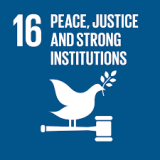
Addressing the Problem
- Home |
- LPF Story |
- Addressing the Problem
The value for school enrolment, primary section - female (% net) in India was 93.03 as of 2013. Over the past 42 years, this indicator reached a maximum value of 93.03 in 2013 and a minimum value of 47.94 in 1971. (Source: UNESCO Institute for Statistics).
In India, the gross enrolment rate of girls is 26.4% in tertiary education (Source: HRD Ministry). This is due to their families having limited availability of finances. The earning members of the family are mainly working as farmers, labourers, drivers, domestic help, doing some odd jobs, etc. Few of them fall in the category of single parents.
Due to this, the priority is given to the boy’s education rather than girls. In such families, a girl’s education & health is never a priority, as they do not see adequate returns. We are trying to bridge the gap.
The problem we are trying to solve is that of ‘Women Empowerment’ from financially disadvantaged homes.
>In India, there are 600 million young people living below the poverty line. The number of unemployed young people in India is 29.5 million!
LPF enables girls to complete their secondary and higher secondary, graduate and post-graduate studies along with building their essential, professional, employability and corporate readiness skills, so that they can seek respectable and gainful employment.
These steps ultimately pull these girls and their families out of poverty.









Educating Girls has a positive impact on at least 9 of the 17. An educated girl contributes to the global socio-economic growth and reduces income inequalities.
The success of the LPF’s projects is seen in the lives of over 17,000 school girls and young adult girls and 82,000+ family members so far.